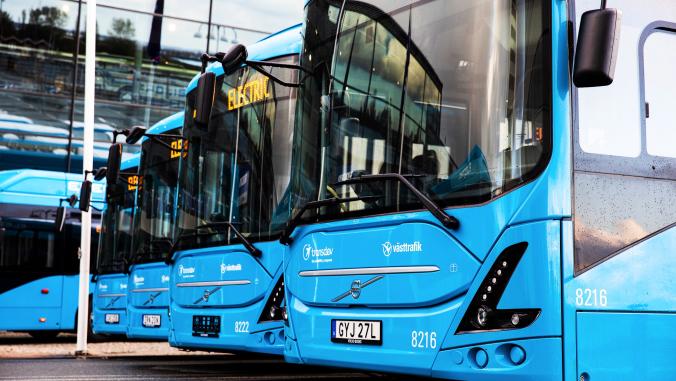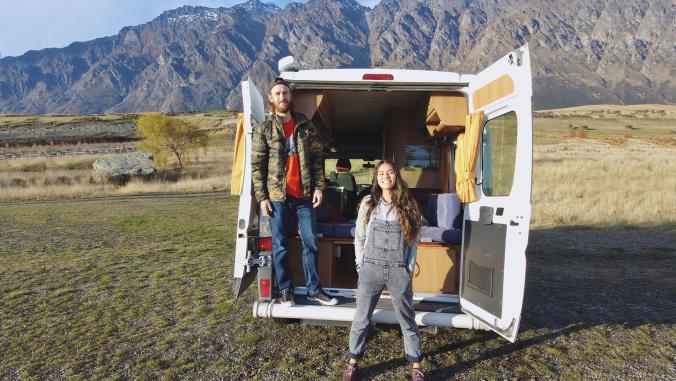For millenia, the ancestral homelands of the Oceti Sakowin or Lakota — the proper names for the people commonly known as the Sioux — spread across an area equivalent to 159 million acres. The territory included present day North and South Dakota, stretching into parts of Minnesota, Iowa, Wisconsin, Nebraska, Wyoming and Montana.
After enduring the plights of colonial-settlerism, broken treaties, acts of genocide and mass disposition of land, the Oceti Sakowin ultimately were forced onto reservations specifically identified as resource-barren and unfit for farming or homesteading. They now steward a small fraction of what was originally theirs — 2 percent, or 3.2 million acres.
Today, tribal leader Lyle Jack, an Oglala Lakota Sioux member born and raised on the Pine Ridge reservation, laughs. "Little did they know that they would stick us in some of the windiest places on earth," Jack muses.
It's true: Present-day tribal lands in South Dakota are home to some of the best onshore wind resources in North America, positioning Jack and his people to become leaders in our collective effort to build a clean energy future.
An uncommon partnership
In the fall of 2018, GreenBiz highlighted a unique renewable energy project that brought together wind developer Apex Clean Energy and Native American tribes interested in developing up to 1 gigawatt of clean energy resources on their land.
To recap, six tribes make up the Oceti Sakowin Power Authority (OSPA) — the Cheyenne River, Flandreau Santee, Oglala, Rosebud, Standing Rock and Yankton tribes — unified in a mission to develop inter-tribal renewable energy resources and bolster tribal sovereignty, self-determination and energy independence. After years of searching for the right partner, OSPA selected Apex to develop their wind resources.
Two years later, the activities that have gone into the 570-megawatt phase one of the project can be considered a valuable model for how clean energy buyers, developers and frontline communities can benefit from these resources and address social and environmental justice issues simultaneously — all through utility-scale renewable energy development. The effort has not been without its setbacks, but progress is being made.
I was anxious to reach a deal that was both economically beneficial and in alignment with traditional cultural teachings about how one interacts with Mother Earth.
Jack, chairman of the OSPA board of directors and a seasoned economic development strategist, said he has personally worked on developing wind on Lakota land since 2007, and it’s been a journey.
Historically, tribal lands across the U.S. were targeted sites for what was promised to be lucrative economic development projects. But coal and uranium mining, oil and gas extraction and associated infrastructure projects always seemed to lead revenue and resources out of Indigenous communities, while leaving tribes with poisoned water and livestock, polluted land and air, community health issues, limited access to profits and a visceral distrust of outside corporate interests.
"It kept me up at night making sure that history did not repeat itself," Jack said. "I was anxious to reach a deal that was both economically beneficial and in alignment with traditional cultural teachings about how one interacts with Mother Earth."
To Jack and the OSPA team’s credit, the structure of this partnership is intentional and unique, and folks should take note.
For one, the arrangement is structured as a joint venture (JV) and the OSPA team was specific on what they wanted — to have true project ownership, complete transparency into the process, the ability to make decisions, and to engage with a partner that respected their cultural beliefs and protocols.
With OSPA owning 51 percent of the project, the JV is set up to render long-term economic benefits to local tribal communities that comprise some of the poorest and underserved counties in the U.S.

Oglala Lakota County, which lies entirely within the borders of the Pine Ridge reservation, is among the poorest counties in the U.S., sitting 51.9 percent below the poverty line. By Shutterstock/Sopotnick
Headways and hurdles
Since the initial announcement in 2018, ground has been broken and pre-development activities are underway. Phase one in meeting the partner’s larger 1G goal consists of two initial projects totaling 570 MW. The 450 MW Ta’Teh Topah (four winds in Lakota) site is on the Cheyenne River Reservation in north-central South Dakota, and the 120 MW Pass Creek site is on the southwestern Pine Ridge Reservation. A long-term environmental study has been completed, and meteorological towers have been set up, gathering years’ worth of data confirming the existence of excellent wind resources.
The project has not been immune to setbacks, though. While the initial goal was to go live in 2021, the launch target has been moved to 2024.
The cause? Changes in federal support for tribal loan guarantees in the past few years, and inadequate information about what type of collateral to post slowed down the capital raising process for OSPA, according to the partners.
Eamon Perrel, senior vice president of business development at Apex, said while this has been a challenge, they are in the midst of productive conversations to finalize financing. "I’m optimistic that we will be advancing into development here over the course of the next two to three months, securing a development loan for OSPA," Perrel said.
He added that the primary reason the project has been delayed is due to an unprecedented volume of interconnection requests resulting in congestion in the Southwest Power Pool. After significant delays on this front, the team has secured its interconnection queue position and is ready to move forward on the construction phase of the project.
A just transition in action
Oglala Lakota County, which lies entirely within the borders of the Pine Ridge reservation, is among the poorest counties in the U.S., sitting 51.9 percent below the poverty line. Per capita income is around $8,768 and unemployment is in the 80 percent range, data gathered under pre-pandemic conditions.
For decades, the Indigenous communities in South Dakota have borne the burden of environmental racism — the disproportionate impact of environmental degradation, pollution and hazards on people of color.
There is a lot to be done in terms of optimizing educational transfer.
Many may be up to speed on the ongoing protest led by the Standing Rock Sioux, an OSPA member, over the Dakota Access Pipeline and their campaign to protect critical and sacred water resources. Their fight continues, and the notion of a fair and inclusive clean economy, one that considers the communities that will first bear the worst impact from decarbonization, is not lost on the Lakota people.
This is where the partnership between Apex and OSPA is emerging as a valuable model for how large-scale renewable energy projects can be framed to meet the criteria for a just transition.
Job creation and training
The partners estimate 450 jobs will be created during construction. The plan is to tap qualified local businesses and individuals from Native communities as much as possible, and the partners acknowledge the need for a tailored training strategy.
"There is a lot to be done in terms of optimizing educational transfer," Perrel said, outlining the needs for support across pre-development, construction, operations and maintenance, roads and transmission line builds.
OSPA and Apex say training curriculum development will be a joint effort, and will be coordinated closely with the Tribal Employment Rights Offices (TERO), leveraging existing training programs and local vocational schools. Part of this effort is assessing skillset gaps and improving the qualifications of Native workforces. This includes identifying and solving challenges encountered by qualified Native-owned businesses and workers, such as the lack of proper work attire or tools, equipment shortages and lack of financing.
Over the past couple years, Apex has hosted several Native interns to expose them to the development business. Eamon said the company can see this program being expanded, incorporating formal on the job training to build hard skills for future projects.
Long-term economic impact
Apex estimates that during construction, the Ta’Teh Topah and Pass Creek sites could bring in $20 million in tax and fee revenue for the tribes. On top of that, the participating tribes will earn additional dollars — estimated in the millions — in lease revenues and through OSPA as a co-developer.
To be clear, the electricity generated from these first projects will not initially serve tribal communities, which is something that they’ve had to clarify with residents. "Profits from initial projects will feed into additional projects and community projects, but we cannot do that without capital," Jack explained. These first two commercial projects are a "vehicle to pull in revenue so we can start investing back into our communities," he said.
When asked what residents are saying about the project, Caroline Herron, OSPA project manager, said, "The biggest community feedback is pride." Jack said he is frequently stopped at the grocery store by people asking him for updates. "People are excited about the project," he said. "It’s just the beginning."

Wind and solar resources from the 574 federally-recognized tribes, like that of the Navajo Nation in Arizona, have the potential to supply all of the energy needs of the U.S. Image by Shutterstock/Leo Altman
A unique opportunity for buyers
The partners are in the early stages of courting corporate partners and off-takers, but say that they’re already attracting interest. And it’s not surprising, as corporate energy buyers add environmental and social justice goals to their sustainability and energy strategies, projects such as this offer valuable and unique power purchase agreement (PPA) opportunities — bringing resources to underserved and frontline communities.
"We’ve seen corporations starting to change. It’s not just about sustainability and social impact as much as they’re putting social justice, racial justice, into their corporate goals," Herron said.
"We’re starting off with fundamentally economically strong, viable, vibrant projects," Perrel added. On top of packaging up a compelling economic project, buyers will be part of a larger system that benefits underserved communities, creates new revenue and educational streams, and works with tribes to do exactly what they want with their land.
Project replicability
Wind and solar resources from the 574 federally recognized tribes, such as that of the Nay'dini'aa Na' Kayax' (Chickaloon) Tribe in Alaska, Navajo Nation in Arizona and Chickasaw Nation in Oklahoma, have the potential to supply all of the energy needs of the U.S., but this incredible clean energy capacity remains virtually untapped.
"Renewable energy projects like this normally bypass the tribes and build on private land," Herron said. To address this, OSPA and Apex invite developers and tribal governments to learn from their successes and struggles. They believe embedded in their project are insights into how to work with sovereign nations, navigate and develop trust lands appropriately, and ultimately build financially attractive projects that are equity-oriented.
Renewable energy projects like this normally bypass the tribes and build on private land.
Both Jack and Perrel highlight the decision to create a JV as key to creating more meaningful ownership. "It also allows the partners to look at future projects under the JV umbrella," Perrel said. And that’s just what OSPA is doing — planning for the next phase of profit reinvestment into community and storage-oriented projects.
Jack’s main advice for tribes thinking about renewable energy projects? "Go big." He said that the decision to combine the financial and natural resources of the six participating tribes was an important factor in creating scale, attracting developers and capital. "Taking care of Mother Earth is in our DNA," Jack said, and he urges other tribes to use the OSPA project as a framework to uplift their communities in a manner that honors their cultural teachings.
What’s next: This is just the start
In the short term, the Apex-OSPA team’s to-do list is pretty straightforward — finalize pre-development financing and investors, and focus on the transmission line permitting process. Hitting these milestones will unlock the next phases of the project, construction and launch slated for 2024, they said.
Over the longer term, plans are already in the works to further develop existing projects and establish new sites for utility and community-scale projects on all participating tribal lands — which are estimated to have over a 2G potential.
In the meantime, the partners continue to gather data points about how to realize a just energy transition. Large-scale renewable energy projects on tribal reservations can benefit all parties, and the Oceti Sakowin have their eyes set on being a leader and teacher on this front.






